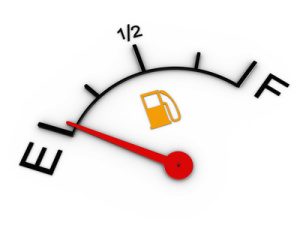In Australia 8.2 million tonnes of food waste is generated each year, most of which ends up in landfill. Once in landfill, food waste breaks down and emits greenhouse gases, including not only carbon dioxide (CO2) but methane (CH4) – a gas 25 times more potent than CO2.
In fact, the greenhouse gases produced by food waste in Australian landfill each year is equivalent to the emissions of Australia’s steel and iron ore industries combined!
each year is equivalent to the emissions of Australia’s steel and iron ore industries combined!
Use the calculators below to get a picture of how the emissions from food waste compare to that of every day activities such as using electricity, or driving a car in Australia.
Electricity
How many days and years of electricity CO2-e production is your business’ food waste equivalent to?
 The average electricity use for a 3 person household in Australia ranges from 11.2 kWh to 27.2 kWh per day.1 This produces an average of 11.45 kg of CO2-e per household per day.2
The average electricity use for a 3 person household in Australia ranges from 11.2 kWh to 27.2 kWh per day.1 This produces an average of 11.45 kg of CO2-e per household per day.2
How many days worth of average electricity CO2-e production is your business’ food waste creating?
For example, the commercial and industrial sector Australia-wide sends approximately 1.5 million tonnes of food waste to landfill each year.3 This figure has been entered into the adjacent field as an illustration.
Petrol Tanks
How many equivalent 50L tanks of petrol is your business’ food waste consuming?
Using petrol as fuel produces CO2, CH4 (25 CO2-e) as well as nitrous oxide (N2O – 298 CO2-e) – emitting 114 kg of CO2 per 50L tank.4
How many 50L tanks is your business’ food waste consuming?

To stay up to date with Watch My Waste and our food waste research, follow us on social media or sign up to our eNewsletter!
1 – Australian Energy Regulator – www.energymadeeasy.gov.au
2 – Department of Environment. (2017). National Greenhouse Accounts Factors.
Emission factors and daily use figures used are averages for all Australian states.
Figures updated July 2017, previously Department of Environment. (2016). National Greenhouse Accounts Factors.
3 – Department of Sustainability, Environment, Water, Population and Communities. (2013).
A Study into Commercial & Industrial (C&I) Waste and Recycling in Australia by Industry Division.
4 – Department of Environment. (2017). National Greenhouse Accounts Factors.
Calculated using post-2004 emission factors.







6 Comments for “Food Waste Greenhouse Gas Calculator”
Why measurement is the first step to reducing food waste – Taste > Waste
says:[…] My Waste also clears up for us just how significant food waste is. The Food Waste Greenhouse Calculator compares food waste to the equivalent use of electricity, petrol and the amount of CO2 that is […]
First Week Figures
says:[…] the calculator at Watch My Waste that 351.5kgs of food waste becomes 667.85 of CO2 […]
How to Construct a DIY Worm Farm for Your House or Flat - Birdgehls
says:[…] about your food waste? Well, as food breaks down it releases a gas known as methane, which is more potent than carbon dioxide and so does mean things to our […]
Milana Travis
says:Thank you very much for your blog.
I enjoyed reading this article.
Desperdicio de comida: el lado oscuro de los banquetes navideños
says:[…] más escasos. Además, gastamos más dinero en eliminar estos desperdicios que, a su vez, generan gases efecto invernadero. También es un mal negocio para el planeta. Y, por el momento, ¡no hay planeta […]
Sonja Meyer – Sustainable Graphic Design Studio 5 Easy Ways To Reduce Your Food Waste - Sonja Meyer - Sustainable Graphic Design Studio
says:[…] to conceive that one fifth of all food bought ends straight up in landfill, contributing to the 8.2 million tonnes of food waste generated in Australia. If we could rescue just one quarter of the food currently […]